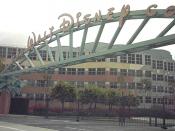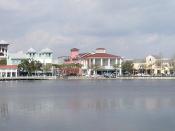1. Introduction
1.1 Purpose
The purpose of this report is to analyse problems of Euro Disney's Land and recommends alternatives and solutions.
1.2 Scope
In examining the problems and recommending the solutions, the report considers causes of the problems. Not only does it provide alternatives and solutions, but also presents issues that Disney should consider when next entering a foreign market.
1.3 Method
In order to complete this report, information has been researched from academic journals, textbooks, newspapers and websites.
1.4 Assumptions
In preparing the last part of the report, it was assumed that Shanghai, China, would be the next site where Disney would choose to invest.
1.5 Background
The Walt Disney Company was founded by Walt and Roy Disney in 1922. At present, Disney, a multinational company, has become a world leader in family entertainment with over 58,000 employees and over 189,000 shareholders around the world ("The Walt Disney Company-a case study", 1996).
Initially, Disney was considered as a specialist in animated films, but after the Second World War the company has diversified into several sectors of entertainment such as television, publishing, film, broadcasting, and theme parks. It is said that Disney's theme parks represent American mass culture. Between 1955 and 1992, Disneyland opened theme parks in California, Florida, Japan and France. In 1997, total revenue from these theme parks accounted for 17 per cent of the company's revenue ("Human resource practices at Disney", 2003). However, in the early stage of Euro Disney, there were several problems, which result in falling attendance and losing its revenue (Ball, McCulloch, Frantz, Geringer and Minor, 2002, p.304). The problems will be presented in the following part.
2. Primary Problems facing Euro Disney in the early stages of its operation in Europe
2.1 Cultural Issues
2.1.1 Human Resource Practices...



Euro Disney
You have written a well adapted essay on the downfal of Euro Disney. I have been so many times and each time it gets worse. Its still a magor atraction, but at the rate its going, a pile of crap will be more intresting, Nice job and keep up the good work\!
11 out of 11 people found this comment useful.